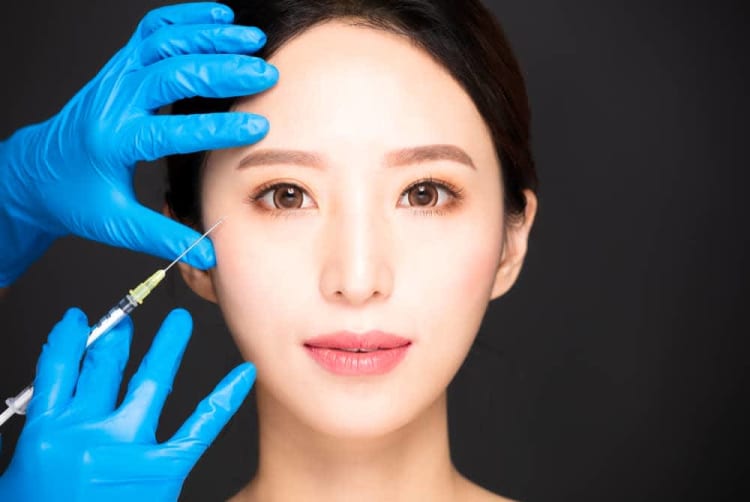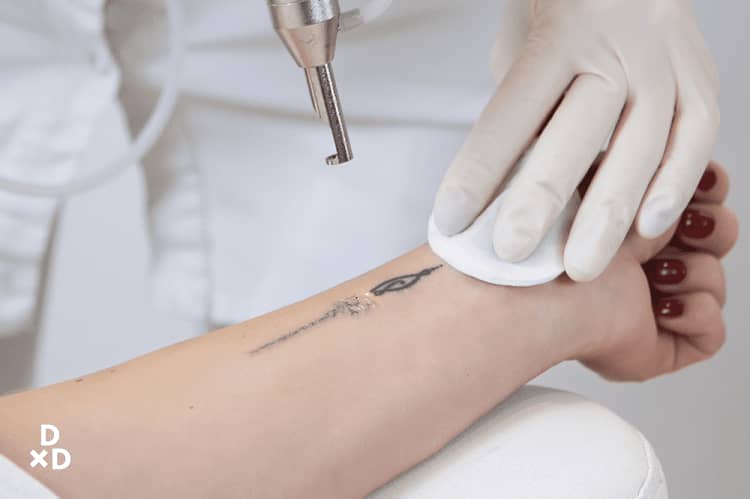In the past few years, you may have heard about the wonders of microneedling as an aesthetic treatment. It has recently made waves among women, with microneedling treatment offers from spas, dermatologists and even online microneedling dermarollers to use from the comfort of your home. The treatment claims to help with just about any skin issue — from acne and fine lines to hyperpigmentation.
The truth is it may not appear as effective as it seems. Is this treatment really worth the hype?
Through flawed evidence and tactical marketing, aesthetic treatment providers have managed to convince many that microneedling treatments help achieve positive results for skin conditions such as acne or acne scars. However, do the supposed benefits of microneedling outweigh the risks?
Let experienced medical aesthetics doctor, Dr Chua Cheng Yu, walk you through microneedling as an aesthetic treatment as he unveils the untruth and debunks myths perpetuated by the booming beauty industry. Beyond that, Dr Chua will highlight more established and scientifically sound aesthetic techniques to look out for, which may help you!
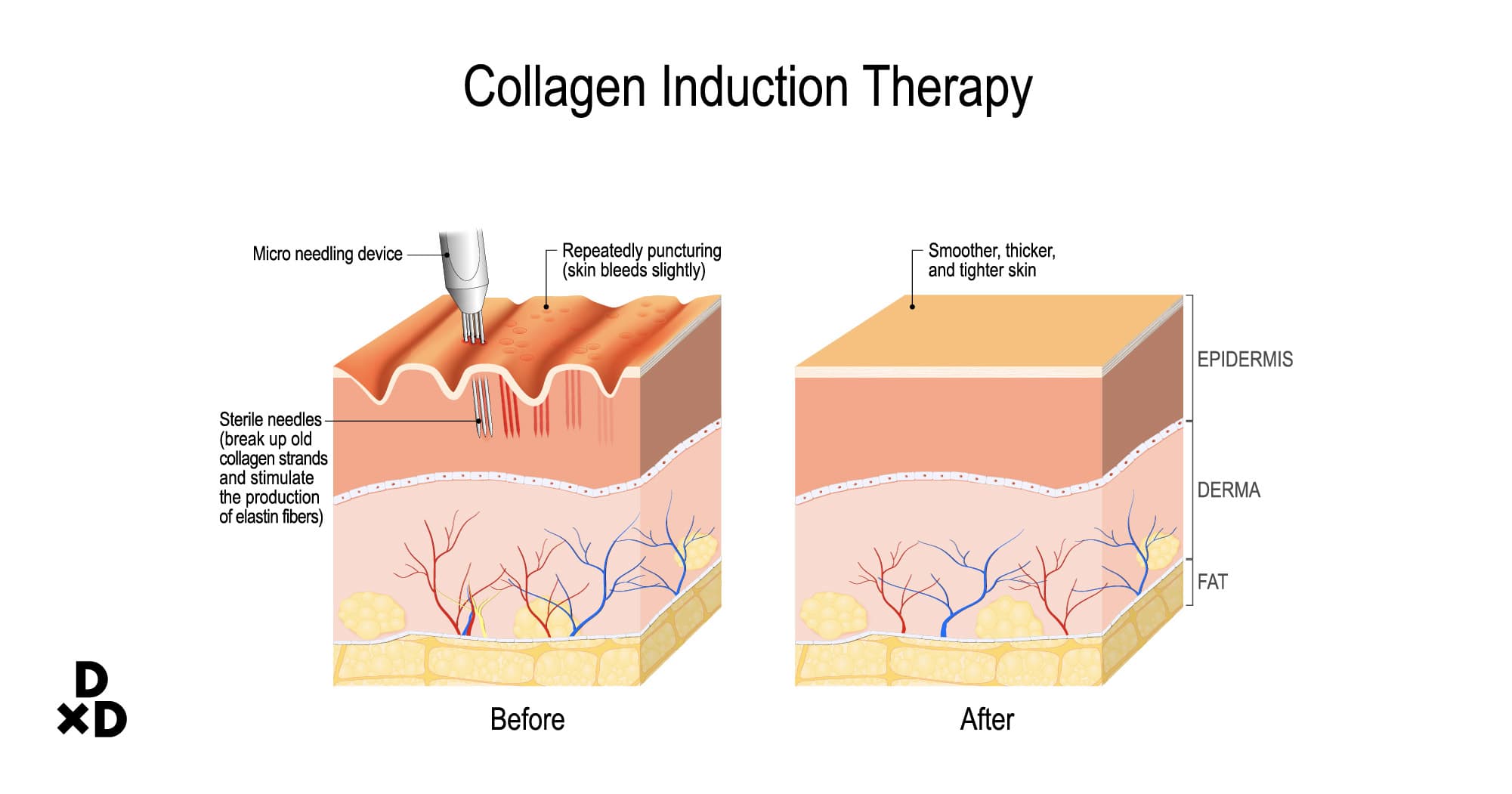
What is Microneedling?
Microneedling, also known as collagen induction therapy, is an aesthetic procedure that involves introducing tiny needles into the skin to help stimulate skin rejuvenation.
Also read: A Complete Guide To Laser And Skin Treatments In Singapore (2021)
The main idea is to cause minor injuries to the top layer of the skin to stimulate collagen and elastin formation, and repair processes to reduce the appearance of wrinkles, fine lines, open pores and scars.
It is mostly marketed to be used for the treatment of skin conditions such as wrinkles, sagging skin, acne and acne scars.
The microneedles are shallow enough that no numbing cream is required and they can be administered across the whole face over one session. With the openings in the skin created, some skincare products are rubbed in for better absorption.
Does one need to be medically trained to do microneedling?
Apparently, no. Microneedling techniques are mostly done in spas, though some clinics do adopt it in their treatment options.
Unlike the beauticians and therapists at spas, aesthetic doctors have to abide by the Ministry of Health guidelines. The Ministry of Health guidelines have listed microneedling as an aesthetic procedure that has a low level of evidence of efficacy due to its weak scientific foundation.
Also read: Is it safe for a beauty salon to carry out a microneedling or dermarolling procedure?
In fact, it is only done by doctors if alternative treatments have failed and if the patient is made aware of how ineffective the treatment is. [1]
How is it still so popular even when the official medical administration frowns upon it?
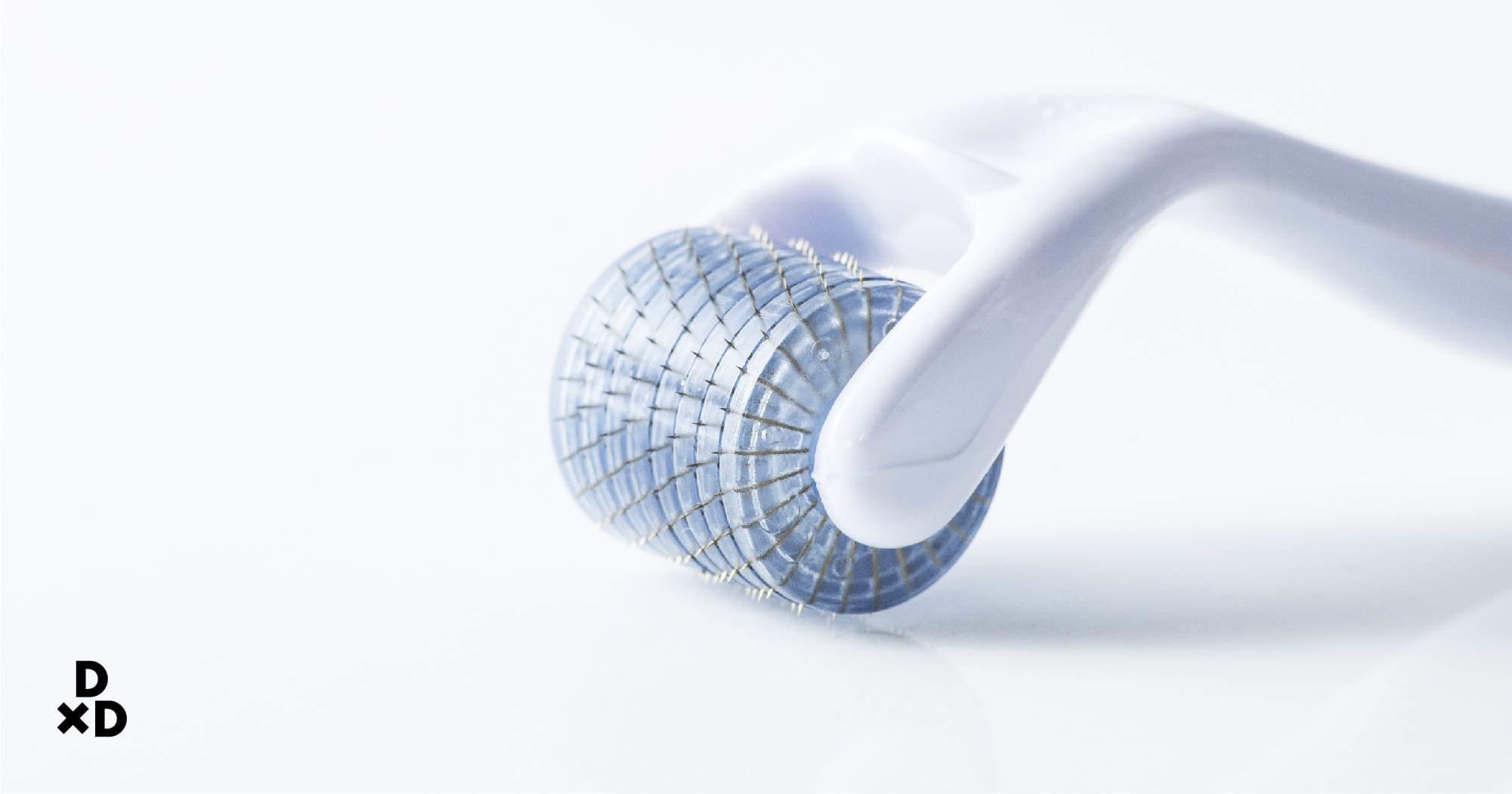
How effective is Microneedling?
Admittedly, there are some effects to microneedling.
However, from my experience, patients who go for a bunch of these microneedling sessions have seen minimal results.
If you are a very observant person, after every session you might be able to see some minor changes in the skin due to an increased blood flow. The exfoliation process might also give you a slightly smoother complexion subsequently. It’s true — you’re injuring your skin and so it will produce collagen to repair itself, but that isn’t always a good thing.
To be fair, to see significant improvements through microneedling, where the appearance of the skin on the face has changed drastically, is unlikely. For instance, indicators of improvement like the scars becoming less prominent (flattened), wrinkles becoming relaxed and the face becoming lifted are results that are not achievable even with multiple microneedling sessions.
Related: The Complete Guide to Anti-Ageing Treatments in Singapore (2021)
What are the side effects of Microneedling?
There are few potential side effects to microneedling:
Anything that creates holes created in the skin gives rise to the possibility of infection as germs can enter the skin easier.
If microneedling is administered too deeply into the skin, there is also potential bruising.
Beyond that, there is also the possibility of PIE (post-inflammatory erythema) or redness post-treatment due to blood vessel damage near the surface of the skin.
PIH (post-inflammatory hyperpigmentation) or brown marks could also occur due to an increase in melanin production in response to inflammation.
For people with sensitive skin, they may actually get flare-ups causing their skin to burn, sting, itch or turn very red.
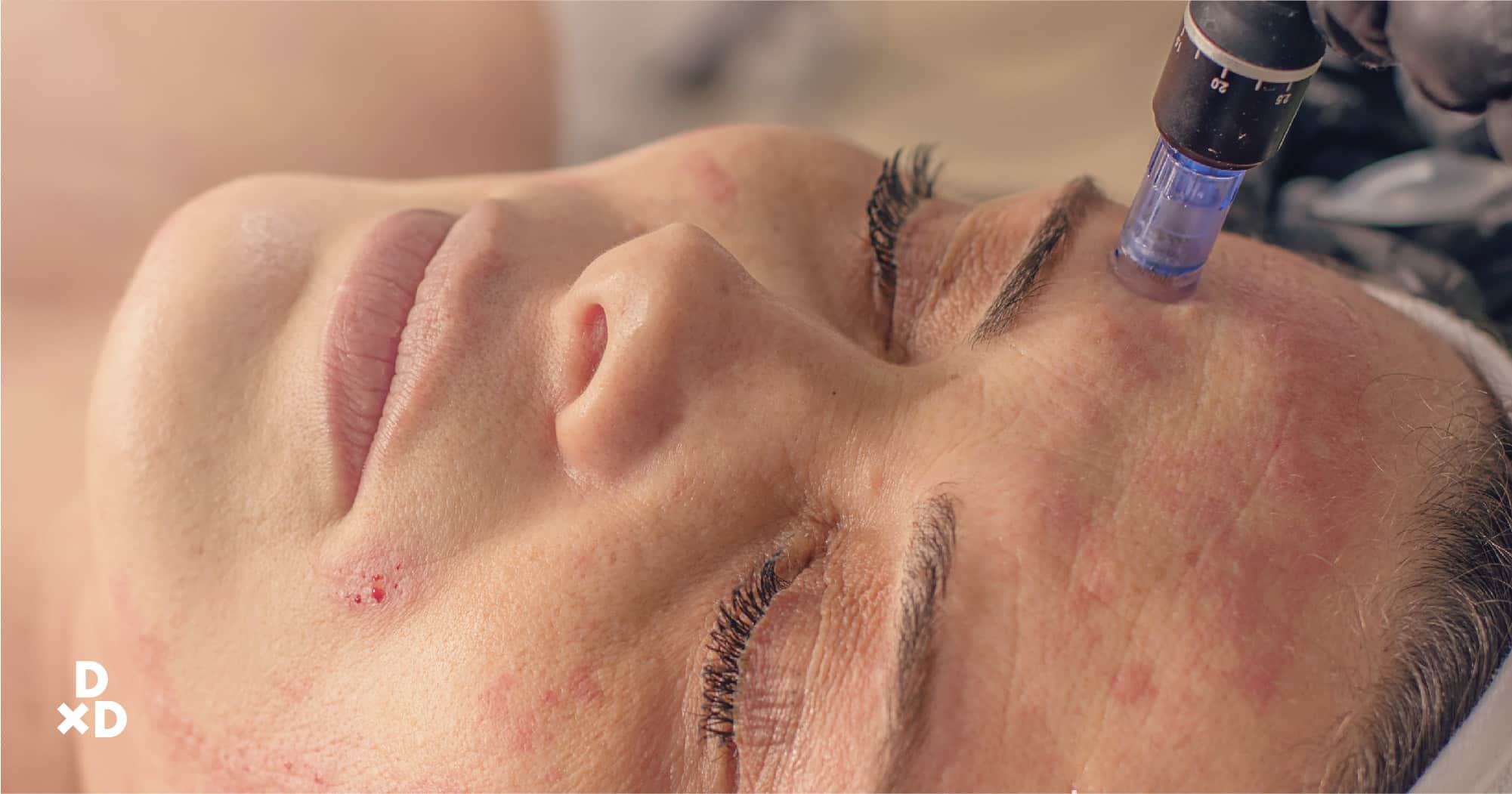
What complications could arise from Microneedling?
There are some of the more serious complications that can result from microneedling.
In rare cases, microneedling can actually cause scarring. For people who are very prone to keloid formations, they may get keloids, which are overgrowths of scar tissue, or serious and prolonged sensitivity in the skin.
What treatments are available to rectify complications from Microneedling?
Yes. Infections can be resolved by antibiotics or other medical treatments for potential pustule formations.
Bruising and marks such as PIE or PIH can also be minimised and treated. Radiofrequency, laser and other various therapeutic treatments can be used to treat bruises and resolve them within 24 hours.
Other complications like sensitivity reaction may require skincare or other more complex therapeutic interventions.
Are there any alternative options to Microneedling?
It really depends on what you are trying to treat. I would say alternatives could be microneedling technique with something else on the side. Such as a lot of people are doing it with skin boosters nowadays or delivering energy with microneedle RF devices.
However, more dependable ones are still conventional devices like Laser or energy-based devices. Or other manually done needling procedures. These tend to yield better results.

Microneedling for the face: Myth or Real Science?
Let us take a deeper look into how microneedling is all it’s cracked up to be. Let's debunk these microneedling myths, look into marketing tactics and reveal their research studies with flawed methodologies.
1. “Before” and “After” photos
a) Institutional regulations
As mentioned earlier, microneedling is mostly offered at spas though some aesthetic doctors do incorporate it into other treatment regimes. Since they are not bound by Ministry of Health (MOH) regulations, these spas tend to display a lot of photographs depicting before and after states of the skin of patients undergoing treatment. This practice is not allowed for doctors as per MOH regulations.
Most of the spas attempt to show that pores and scars get better with microneedling treatment by displaying these “before” and “after” photos.
For instance, take a look at some of the before and after photos from spas that are featured on popular online beauty blogs and wellness-related websites. When compared, the areas of the skin that have undergone treatment looks better, with less visible pores and scars.
But is it really due to the effect of microneedling?
We realise that microneedling is only offered at spas because doctors can offer better treatment options. If they are mainly done by spas, you realise they are not bound by MOH or PHMC regulations about displaying before and after pictures.
In the very first place, we need to understand that the photos are not published by doctors.

b) Invalid comparison across photos
The second thing to note is that photographs, in the absence of standardised lighting or camera techniques, can often be misleading.
On the surface, you can immediately see from photographs with before and after comparisons, claiming that the pores and scars are better after treatment. The photos may make it seem as if microneedling was effective. However, if you observe more keenly, you will notice that the lighting used for the photos played a bigger role in enhancing the texture of the skin, instead of the treatment’s effects.
Photo lighting and other photo techniques can change how something looks and people make use of them all the time. The differences in many of the photographs include a lot of shadows and indirect lighting in the “before” photo. This accentuates the appearance of all the scars due to lighting coming from the side of the face.
When you look at the “after” photo, direct lighting is used instead and it illuminates all the scars and the pores, making the skin look better overall. The contrast is intensified.
2. “Clinical studies show amazing collagen growth”
Such claims are quite exaggerated if you take a look at the objective conclusions from the research papers.
Multiple sessions of microneedling are usually required to have an effect on collagen production [2] which makes it pale in comparison to other conventional treatments. In addition, for atrophic acne scars, studies have shown that microneedling is unable to achieve positive results. [3]
The language used to market such treatments may be attractive but it could be a facade for an underwhelming efficacy to those treatments discovered through studies.
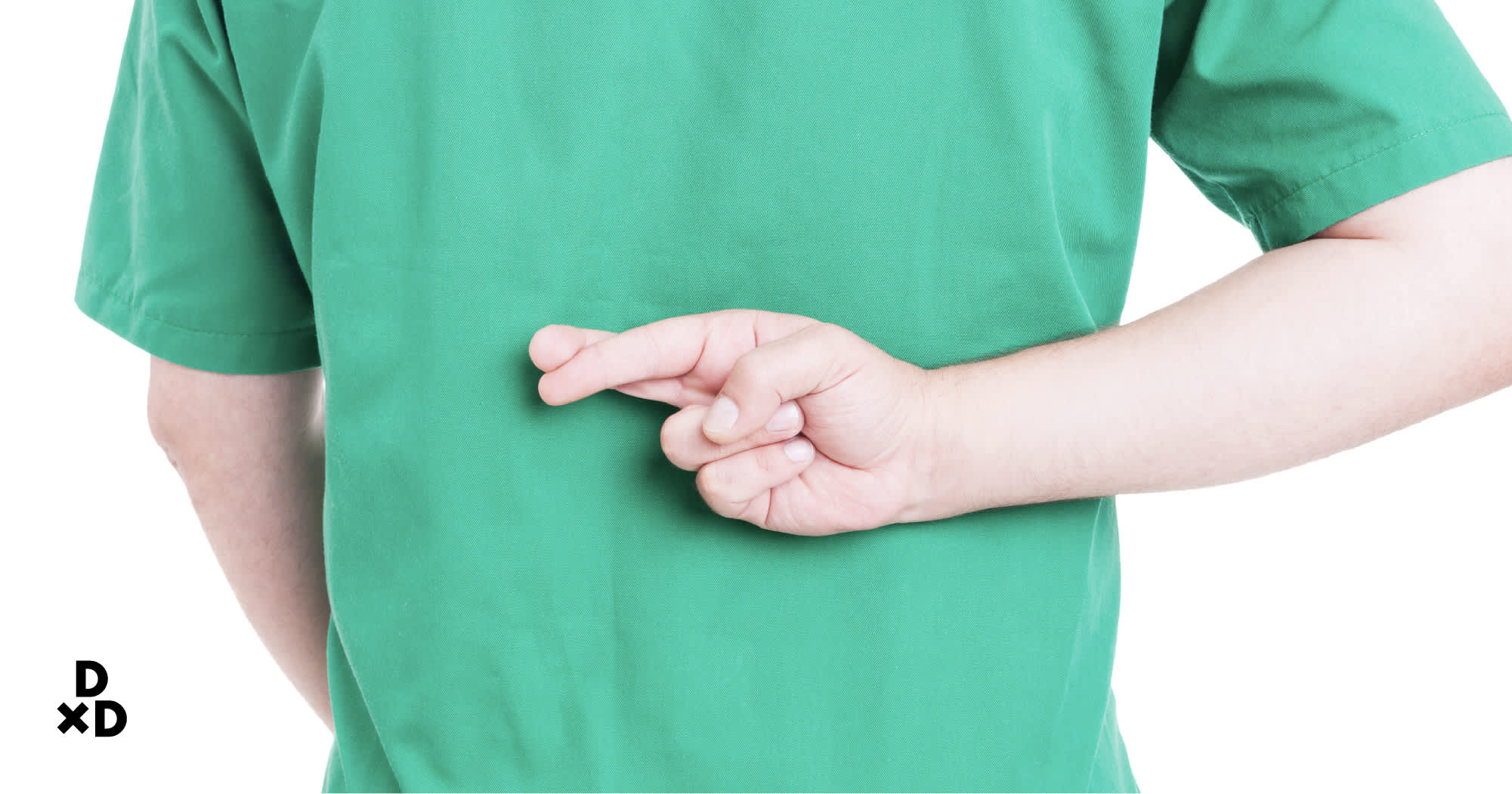
3. “Microneedling RF must work because they add energy to it and it is done by a doctor!”
This is another component to this recent microneedling craze in Singapore.
Numerous doctors are advertising microneedling radiofrequency (RF) treatment. This is the latest wave of microneedling treatment borne from the realisation that microneedling does not actually work that well on its own. To that end, another dimension is added to microneedling treatment with the use of energy-based devices.
While microneedling by itself stands on weak research foundation, there is a common practice of using microneedling along with radiofrequency apparatus to deliver treatment.
In microneedling RF treatments, an electric current is run through the microneedles, mostly at the tips. This is deemed to enhance the treatment for skin conditions such as acne and acne scars. It is astonishing as these treatments cost thousands of dollars per treatment session!
But the fact is, most of them do not work that well.
a) Weak research foundation behind microneedling RF
A comparative study done suggests that a simple conventional laser is more effective than fractional radiofrequency microneedling in treating acne scars. [4] A literature review of microneedling studies shows that there are some limitations to the scientific methods employed. [5]
It is important to realise that a flawed scientific study confers less reliability to whatever results it produces, positive or negative, even though it can still show promise for future research. This is reflected in the MOH guidelines as well, where it does not promote the use of medical techniques that are not well-substantiated through proper research.
These microneedling devices are being introduced to treat acne scars although there are a fair number of studies done to show that they do not work as well as traditional conventional lasers. Some clinics continue to use it because of marketing support despite poor scientific backing.
b) Misleading depth of microneedling effect
There is another interesting thing about this. Some video demonstrations of these microneedling RF machines show that they cannot really penetrate the skin at the depth that they claim the machines can.
For instance, while some claim that the machine can project into skin depths of 2mm or 3mm, the video demonstration reveals that that is not the case. The needles of the microneedling RF machines are thicker than those of conventional microneedling Dermarollers and Dermapens.
The videos show that the needles are not penetrating at the depths that were claimed.
Even though we know that it is done by a doctor and there is the use of energy waves, the objective videos reveal that there is lower penetration to the skin than claimed.

4. “Only with needles that go so deep then can "deep acne scars" be treated!”
This is a highly used marketing point that many doctors are employing. There is this notion where due to the fact that acne scars can be very deep into the skin, the microneedles’ reach of up to 3.5mm to 5mm can ‘treat’ these deep acne scars.
A lot of people buy into that concept.
Related: The Ultimate Guide to Acne Removal in Singapore (2021)
Basically, these doctors are showing that some acne scars have a depth between 3mm to 4mm. In actual fact, facial skin thickness only goes up to a maximum of about 2mm. [6]
Most of the time, the acne scars are at about 1mm in depth and there is no need to go beyond that depth. There are never acne scars that go down 3-4mm depth, especially when you are dealing with atrophic scars. The skin at atrophic scar areas is usually even thinner.
Hence, it is not necessary to treat the skin at the 5mm depth for acne scars. At the 4 to 5mm depth, basic anatomy or Google searches will show that that is the fat layer and close to the ligaments and muscles in the face.
This emphasis on the depth of microneedle reach is misleading and adds on to the illegitimacy of using microneedling treatments. This advertisement shown below highlights how misleading some of these treatments or marketing materials can be:
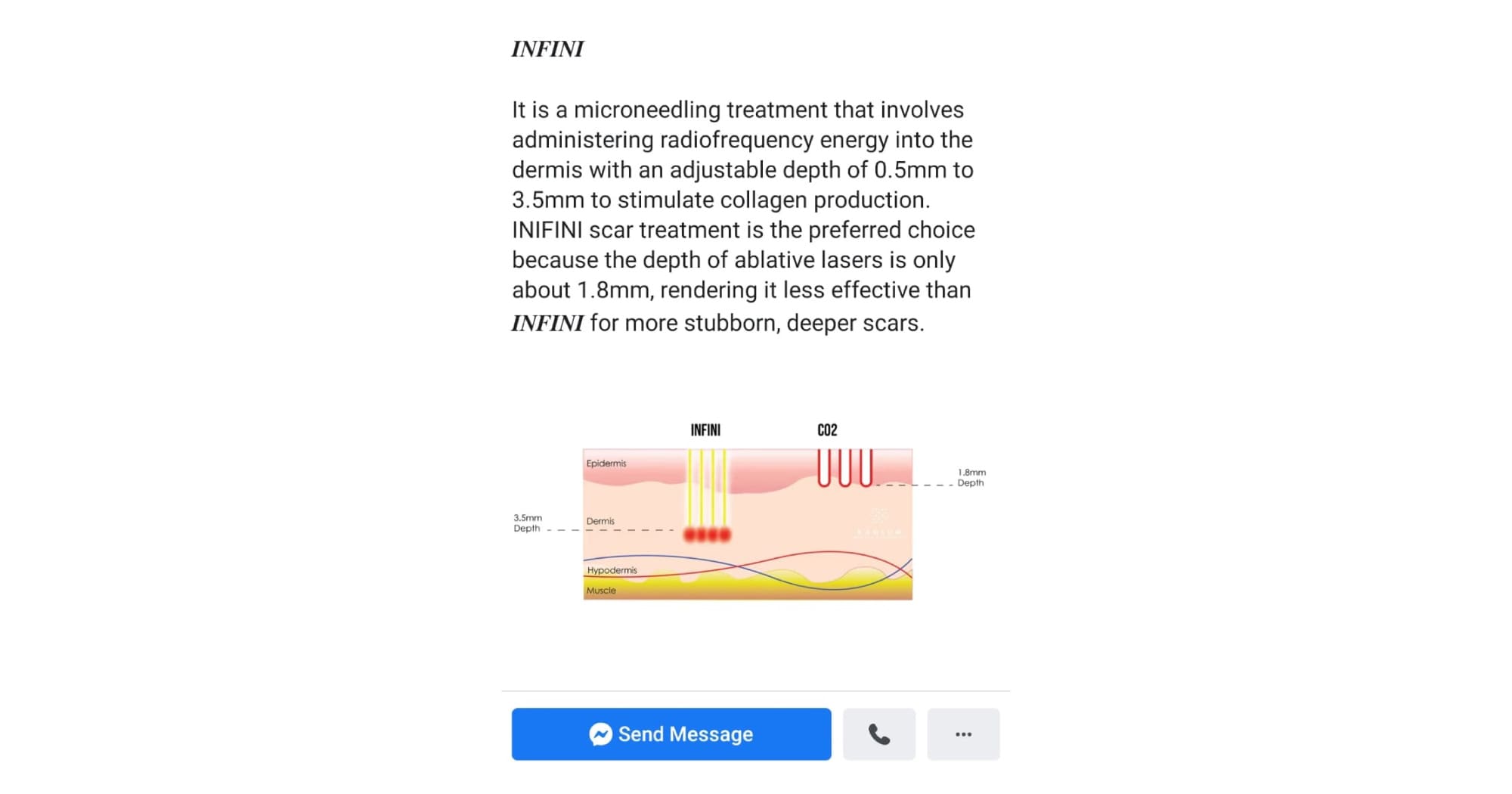
_Example of advertisement found online
_

5. “Okay, then if it goes so deep, then at least it can be useful for face slimming or lifting?”
Yes, at the 4-5mm mark you can target the fat and ligaments. It is possible to achieve some slimming effects for people with bulky cheeks.
Related: The Complete Guide to Facelift Options in Singapore (2021)
However, like what the video demonstrations reveal, the devices do not actually reach those layers accurately. There is very little accuracy to the claims in the first place.
Secondly, if you were indeed to go down to that layer, it would start to hurt a lot. It is not practical to penetrate right from the surface of the skin all the way down into that layer.
Lastly, here’s another video that portrays how you do not get any effect on the fats or the ligaments from these devices. Even at the maximum setting or full power, they cannot achieve the results that they claimed. The video shows that we used it on pork samples that we obtained from the supermarket. You can see that there is no effect at all.
Compare these to other skincare treatments on the market, where they use the correct energy levels to achieve the immediate clinical response — the fat layer can be immediately seen to ablate. That is the difference between the highly marketed devices and the actual effective devices.
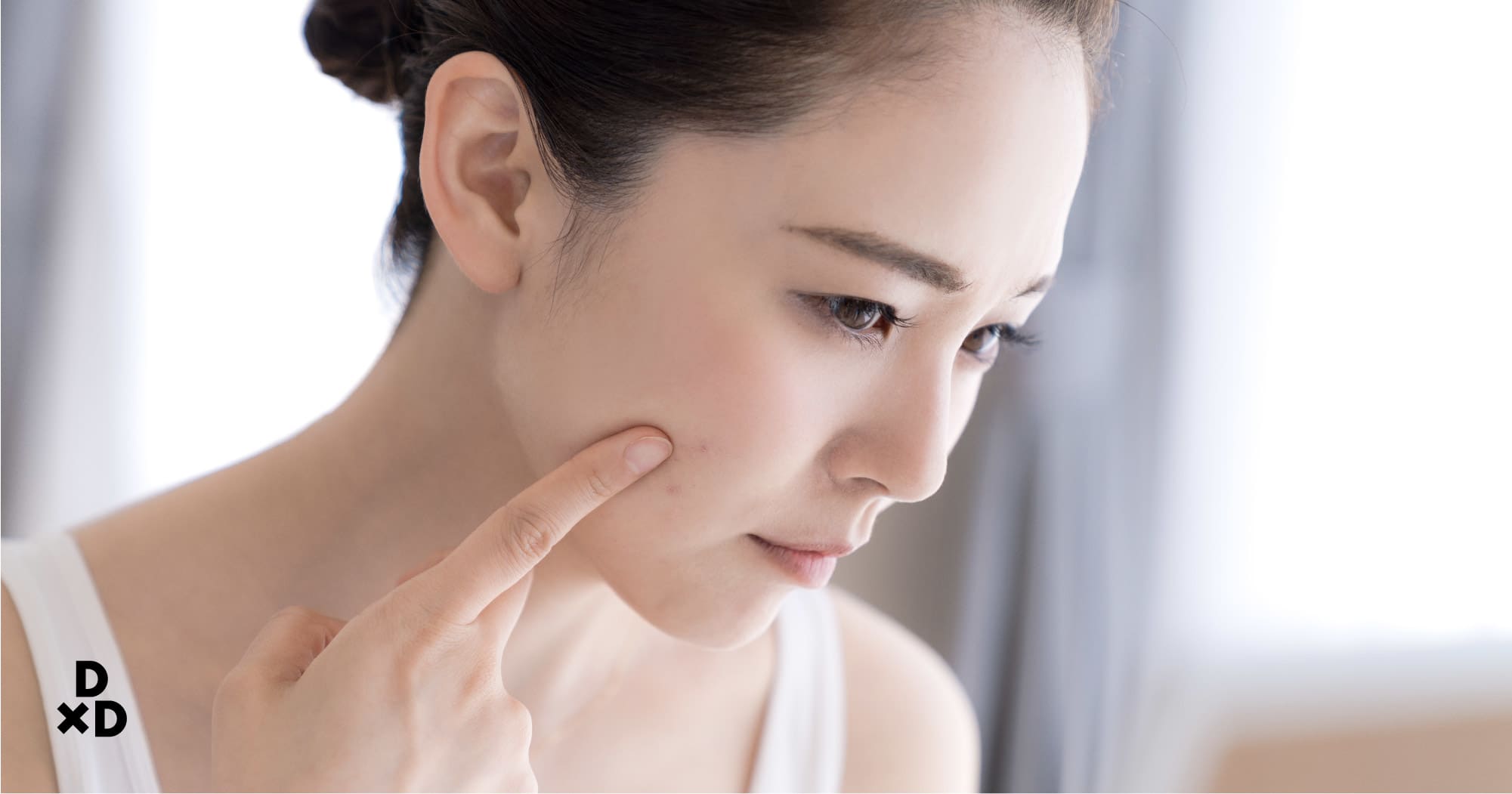
6. “Good for treating acne”
Acne is an accumulation of oil and dead skin cells in your hair follicles that may cause inflammation. Bacteria may be built up within as well.
If you intend to undergo microneedling to treat acne lesions, the process essentially involves poking the lesions and potentially giving it more chance to spread across your face. The risk of infection is also possibly higher.
This is already a counterintuitive method to treat acne on the basis of principle.
What are some of the better treatment options?
1. AGNES
AGNES is one of the only microneedling devices that incorporates radiofrequency technology in a way that allows it to actually reach the promised depths within the skin. It does so with ultrafine needles.
Unlike other microneedling RF devices, AGNES can penetrate through the skin adequately and deliver a high fluence of energy.
Read also: How effective is microneedle RF in reducing sebum secretion?
You can actually observe the fat sizzling at the clinical settings of Agnes.
2. Lasers
In this case, old is gold. Earlier on, a research paper showed that conventional laser technology can get more effects than the microneedling RF devices. [4]
Most of the time when you are looking for skin tightening devices, a lot of them are fractional laser devices that can deliver high energy pulses. They can effectively target different depths of the skin.
Fractional ablative and fractional nonablative laser treatments are good alternatives to microneedling RF treatment. In fact, we use about 6 or 7 of them in our clinic to target various layers and different problems.
Related:
Is microneedling a good alternative to fractional lasers for moderately severe acne scars?
How can I prevent breakouts after Infini RF Microneedling or Fractional CO2 lasers?
How effective is fractional Co2 laser vs Infini RF for acne scars?
The Essential Guide To Non-Surgical Eye Bag Removal in Singapore (2021)
3. Nanofractional RF
Nanofractional RF can achieve both coagulation as well as surface ablation which are important processes for skin recovery.
Amongst the types of RF treatments, nanofractional RF is one of the most preferred because it can beneficially change the surface appearance as well as institute deep dermal improvements within the skin.
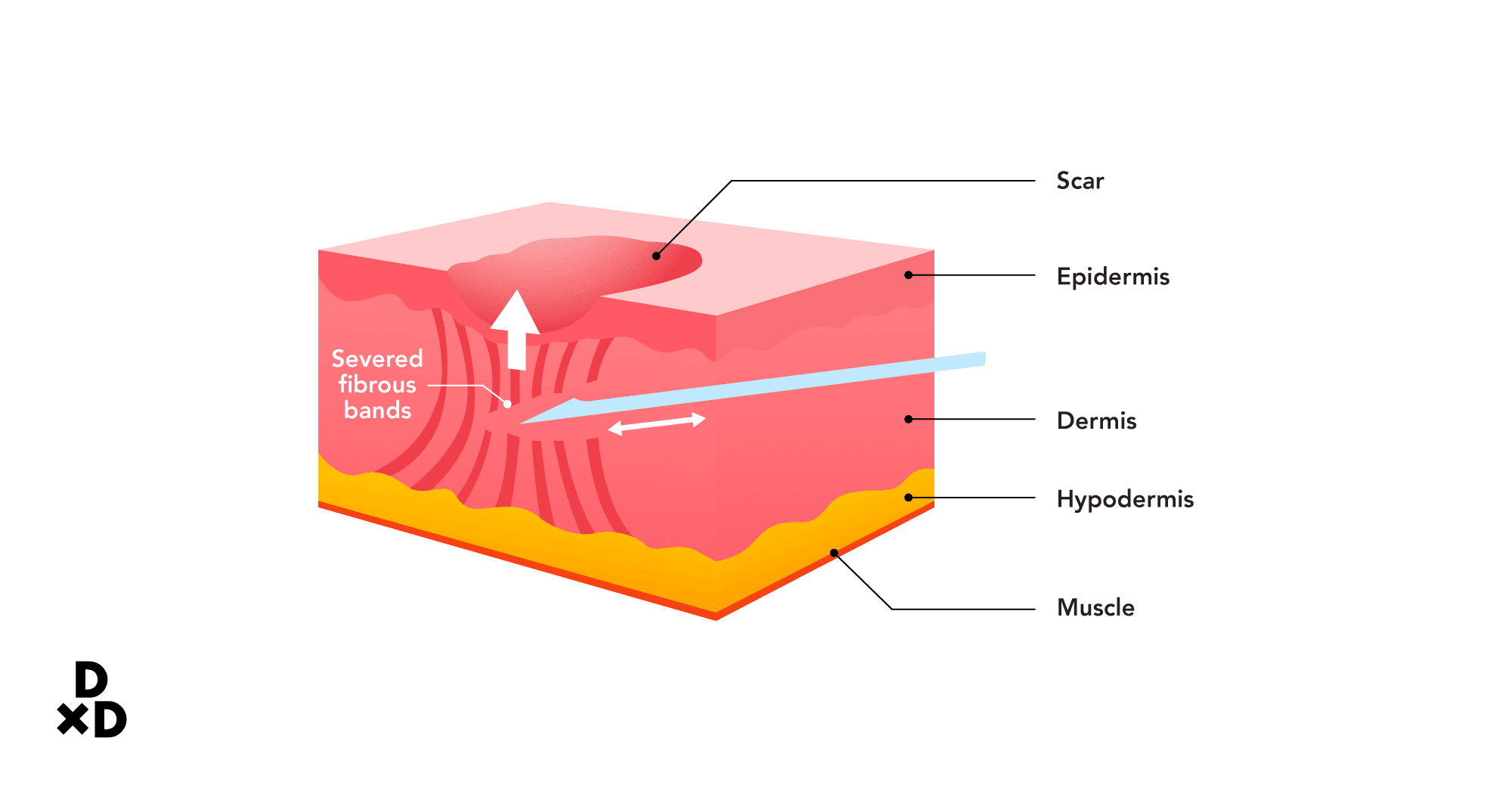
4. Subcision
Acne scars contain fibrous components that cause the scar to be depressed into the dermis. [7] It does not make sense to administer needles perpendicularly to the skin with microneedling.
Conversely, subcision makes use of a more sensible method which involves administering needles sideways to cut the fibrous bands sideways. This is especially effective for rolling acne scars.
Think of how you would cut grass: it is counterintuitive to cut grass straight down from above and instead it should be done by the sides.
Related: How safe is Subcision, TCA Cross or Intracel RF microneedling while on low dose Accutane?
Summary
There are many inaccuracies surrounding microneedling treatments especially in relation to providing care for skin conditions like acne or acne scars. In this cause, microneedling is all smoke and mirrors — an invention of aggressive marketing in the latest quest to stay youthful.
Lucky for us, advancements in technology offer alternative treatment options that are safer, more effective and supported by well-established scientific studies that can achieve better results than microneedling treatments.
It’s important to trust your aesthetic doctor and communicate your desires and concerns with them in order to craft a treatment plan that best suits you.
If you have any other questions or would like to book a consultation, head over to aesthetic doctor, Dr. Chua Cheng Yu’s profile.


